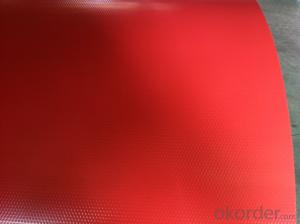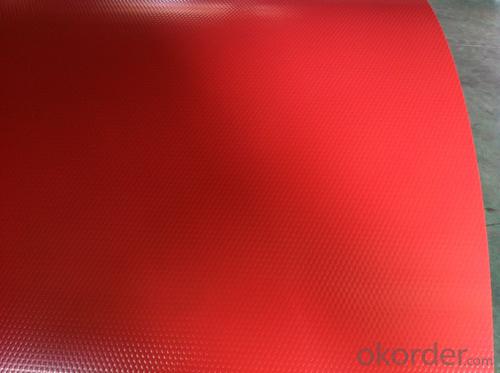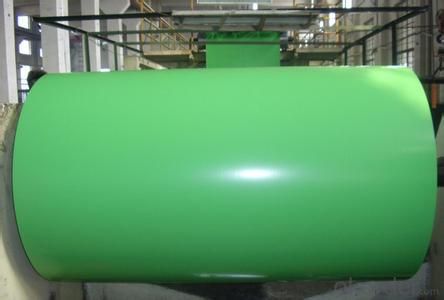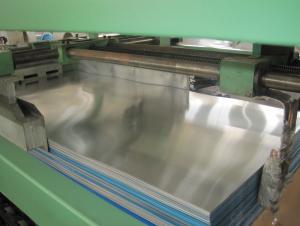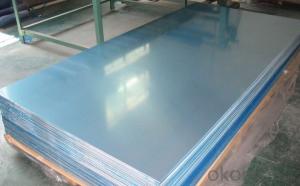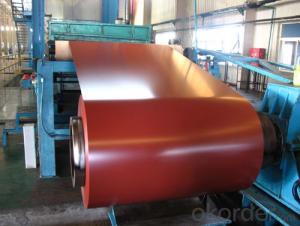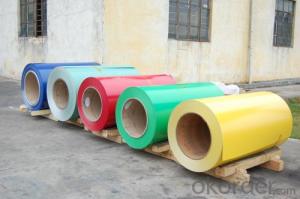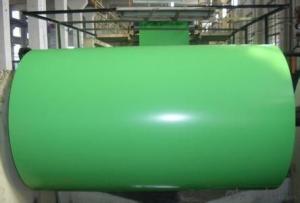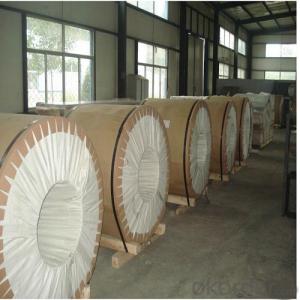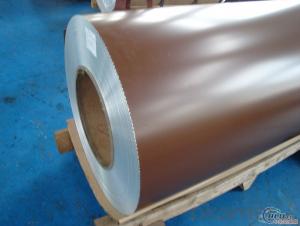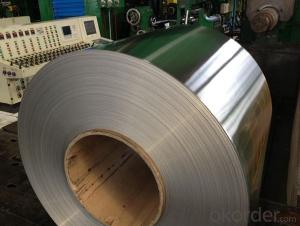Number 4 Brushed Aluminum Sheets - Aluminium Coils with PVDF Coating 22-40 Microns
- Loading Port:
- Shanghai
- Payment Terms:
- TT OR LC
- Min Order Qty:
- 5 m.t.
- Supply Capability:
- 5000 m.t./month
OKorder Service Pledge
OKorder Financial Service
You Might Also Like
Specification
1.Structure of Aluminium Coils with PVDF Coating 22-40 microns
Aluminium Coils with PVDF Coating 22-40 microns are widly used in decoration field. For the painting, it depends on the using evironment. If you use in the open air, we recommend the PVDF coated aluminium coils. This kind of painting can last 15-20 years. If you use in the room, we recommend PE coated aluminium coils. The price is much more competitive.Its weight is much lower than steel. So many customers choosed aluminium material instead of steel.
2. Main features of Aluminium Coils with PVDF Coating 22-40 microns
a.Competitive price---We have our own mills and can produce mill finished aluminium coils, so we can control the production cost better.
b.Professional after-sale service---We have more than 15 years exportation experience and you need not worry about the exporation problems.
c.Fast delivery time---We can control the delivery time within 35 days.
3. Image of Aluminium Coils with PVDF Coating 22-40 microns
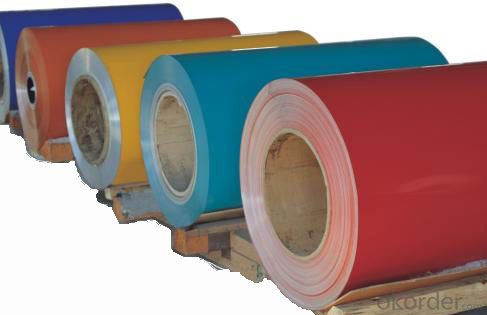
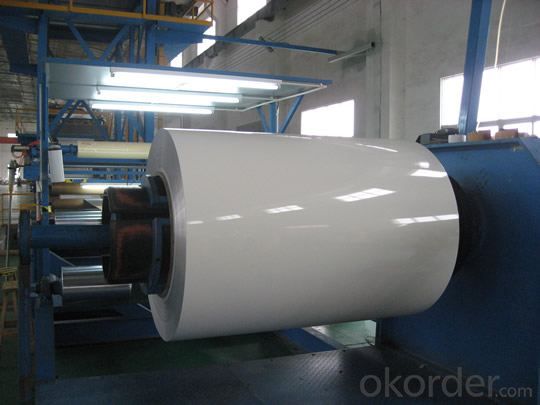
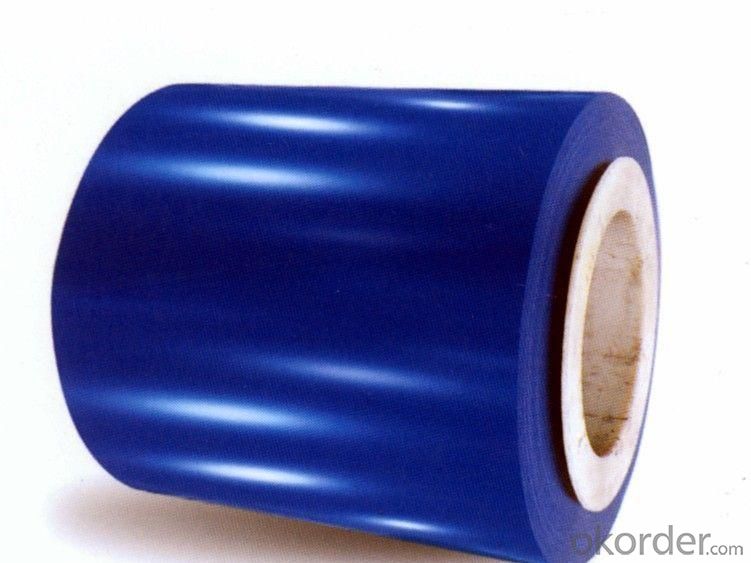
4. Product Specification of Aluminium Coils with PVDF Coating 22-40 microns
| Alloy | Temper | Thickness | Width | Coating Thickness |
| AA3003 | H14 | 0.2-3MM | 1000-1800MM | 20-25 MICRONS |
5.FAQ of Aluminium Coils with PVDF Coating 22-40 microns
What is the quality standard?
---Usually our standard is GB3880-2006
What is the largest width?
---It is 2300mm
What is the MOQ?
---Usually we can accept 80 tons.
- Q: Can aluminum sheets be used for bus shelters?
- Yes, aluminum sheets can be used for bus shelters. Aluminum is a lightweight and durable material that can withstand harsh weather conditions, making it suitable for outdoor structures like bus shelters. Additionally, aluminum can be easily fabricated and customized to meet the specific design requirements of bus shelters.
- Q: How does the surface roughness affect the friction properties of aluminum sheet?
- The friction properties of an aluminum sheet are significantly affected by its surface roughness. When the surface is rough, there are more microscopic peaks and valleys, which can enhance the frictional forces between the sheet and the contacting surfaces. Generally, an increase in surface roughness results in a higher friction coefficient. This occurs because the roughness increases the effective contact area between the aluminum sheet and the opposing surface, leading to more interlocking and adhesion between the two surfaces. Consequently, the resistance to relative motion, or friction, is heightened. Moreover, a rough surface can trap lubricants or contaminants, reducing lubrication efficiency and increasing friction. The roughness of the aluminum sheet also influences the formation and retention of a lubricating film, further impacting the friction properties. It is important to acknowledge that the type of roughness, such as its amplitude, wavelength, and orientation, can also affect the friction properties. For instance, certain surface textures, like grooves or patterns, may facilitate lubricant retention and reduce friction, even with increased roughness. In summary, the friction properties of an aluminum sheet are significantly determined by its surface roughness. A rough surface increases the contact area and adhesion between the sheet and opposing surface, resulting in higher friction coefficients. However, the specific characteristics of the roughness and the presence of lubricants or contaminants can further influence the friction behavior.
- Q: Is it possible to use aluminum sheets in the manufacturing process of solar panels?
- <p>While aluminum sheets can be used in the construction of solar panels, they are not the primary material for making the solar cells themselves. Aluminum is typically used for the frame or backsheet to provide structural support and protection. The actual solar cells are made from materials like silicon, which is capable of converting sunlight into electricity. So, while aluminum plays a role in the assembly of solar panels, it is not used to create the photovoltaic cells that generate power.</p>
- Q: What is the dielectric strength of aluminum sheets?
- The dielectric strength of aluminum sheets is typically around 20-30 kilovolts per millimeter (kV/mm).
- Q: Can aluminum sheets be embossed or engraved?
- Yes, aluminum sheets can be embossed or engraved.
- Q: I'm working on this project and I have to glue together a 4mm thick aluminum and a 5mm aluminum. It's a 17mm wide hexagon.
- METHOD OF JOINING ALUMINUM TO ALUMINUM A welded joint having good electrical and mechanical characteristics is obtained between aluminum members by using a copper or copper alloy cloth or screen between the members to the joint. Heat and pressure are applied through resistance electrodes to melt the small wires of the screen and cause the aluminum metal to bond together.
- Q: What are the thermal conductivity properties of aluminum sheets?
- Aluminum sheets possess exceptional thermal conductivity characteristics. With a thermal conductivity of approximately 237 Watts per meter-Kelvin (W/mK), aluminum surpasses other commonly used metals like steel or copper in this aspect. Consequently, aluminum sheets excel in the efficient transfer of heat over their surface. Due to its high thermal conductivity, aluminum can swiftly conduct and distribute heat, making it an optimal choice for applications that demand efficient heat transfer, including heat exchangers, cooling systems, and heat sinks. Moreover, aluminum's lightweight nature and resistance to corrosion further enhance its popularity in thermal management applications. In summary, aluminum sheets exhibit outstanding thermal conductivity properties, positioning them as the preferred material in industries that prioritize efficient heat transfer.
- Q: This question asks for methods to prevent aluminum sheets from rusting.
- <p>Aluminum doesn't rust in the same way as iron does, but it can still corrode. To protect aluminum sheets from corrosion, you can apply a protective coating such as a clear lacquer or a specialized aluminum paint. Regular cleaning and maintenance are also important to remove dirt and moisture that can lead to corrosion. Avoid using harsh chemicals that could damage the protective oxide layer naturally present on aluminum. In outdoor applications, ensure that the aluminum is not in contact with incompatible materials that could cause galvanic corrosion. Proper design and installation practices can also help in preventing corrosion.</p>
- Q: What is the weight per square foot of 101 aluminum sheets?
- The weight of 101 aluminum sheets per square foot may vary based on the thickness of the sheets. Typically, aluminum weight is measured in pounds per square foot (lbs/ft²). To accurately determine the weight per square foot of 101 aluminum sheets, it is necessary to be aware of the thickness of each individual sheet. Once the thickness is known, the weight per square foot can be calculated by utilizing the density of aluminum, which is approximately 0.098 pounds per cubic inch (lbs/in³).
- Q: iron-based alloys over aluminum in structural members of bridges and buildings?
- Strength-to-weight ratio.
Send your message to us
Number 4 Brushed Aluminum Sheets - Aluminium Coils with PVDF Coating 22-40 Microns
- Loading Port:
- Shanghai
- Payment Terms:
- TT OR LC
- Min Order Qty:
- 5 m.t.
- Supply Capability:
- 5000 m.t./month
OKorder Service Pledge
OKorder Financial Service
Similar products
Hot products
Hot Searches
Related keywords
